ALBERTI Regel, 1879
Synonyms :
Umbilicus affinis Schrenk (1841) / Cotyledon affinis (Schrenk) Maximowicz (1883) / Sedum affine (Schrenk) Hamet (1929) / Pseudosedum affine (Schrenk) A. Berger (1930)
Sedum schrenkii Fröderström (1932)
Sedum berunii Pratov (1974)
Type : Regel s.n., Central Asia.
Subgenus Sedum
Etymology : Named for Albert von Regel, the oldest son of the botanist Eduard A. Regel.
Distribution : W Siberia (Kokchetav, Pavlodar and Karkaralinsk Mts., S Altai), C Asia: Ulutau Mts., Dzhungarian Alatau and Tien Shan Mts. to Tibet and W Mongolia (Mongolian Altai); stony mountain slopes, rocks, dry stony riverbeds, 1100 - 1750 m.
Description (by 't Hart & Bleij in IHSP, 2003) :
Perennial herbs, rhizome robust, branching, caespitose, with numerous small sterile stems, 1 - 2 cm long.
Leaves linear to suboblong, 2 - 7 mm, densely mamillate.
Inflorescences : Flowering branches several, loosely leafy, 7 -15 (-25) cm, inflorescences corymbiform, with scorpioid secund branches, pedicels to 1 mm.
FIowers 5-merous, sepals very slightly connate, subacute, to 2,5 mm, corolla tube to 1,3 mm, lobes submucronate, to 5 - 6 mm, pure white, anthers dark purple.
A typical Sedum. The closest relationship is with the Caucasian S. subulatum.
S. berunii allegedly differs from S. albertii only in having yellow flowers, which might be an artefact of the type specimen.
Plant in situ, Southern Kazakhstan, Steppe under the Foothills of Talassky Alatau, Ungur Sai :
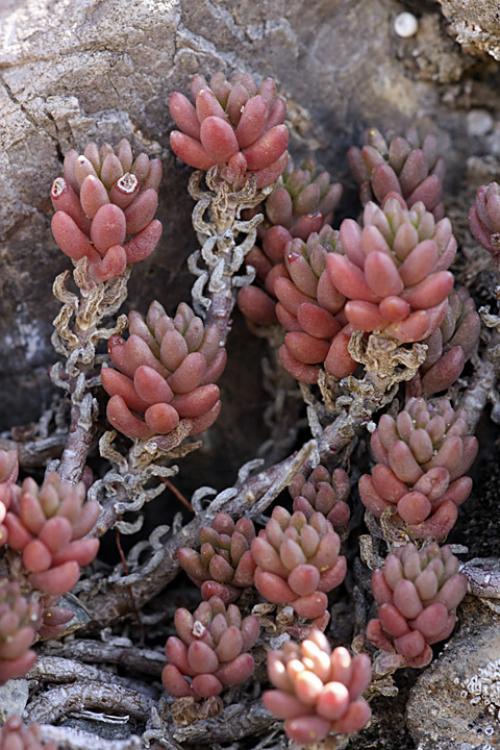
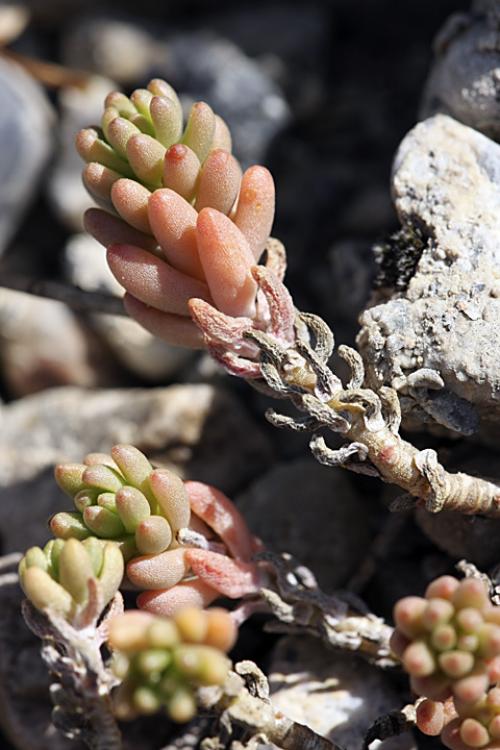
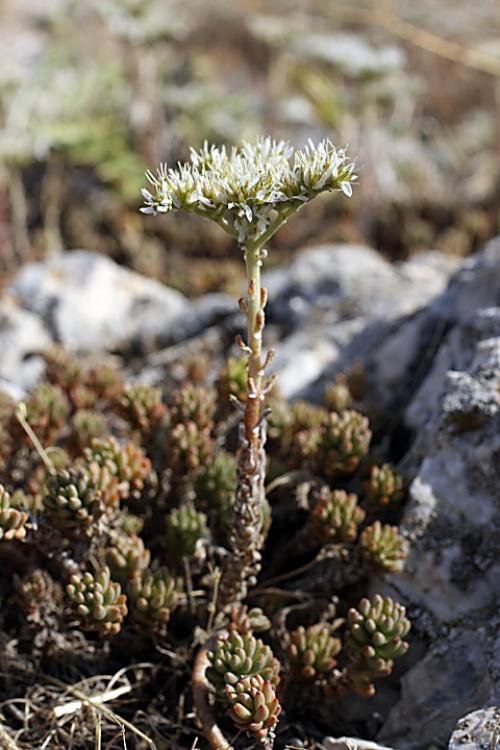
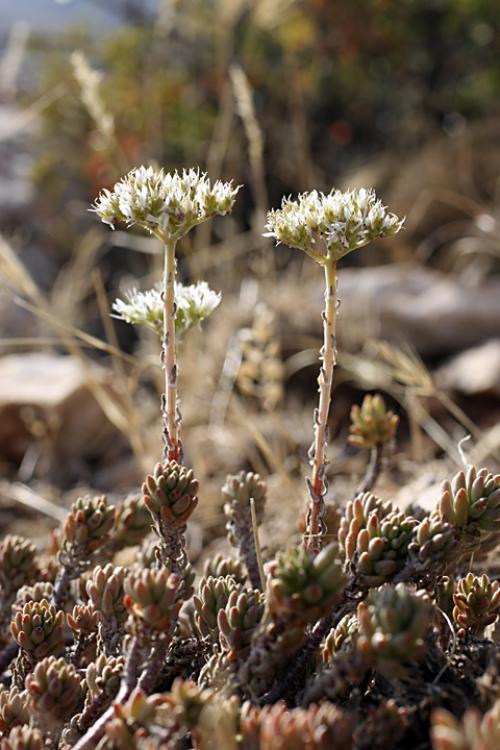
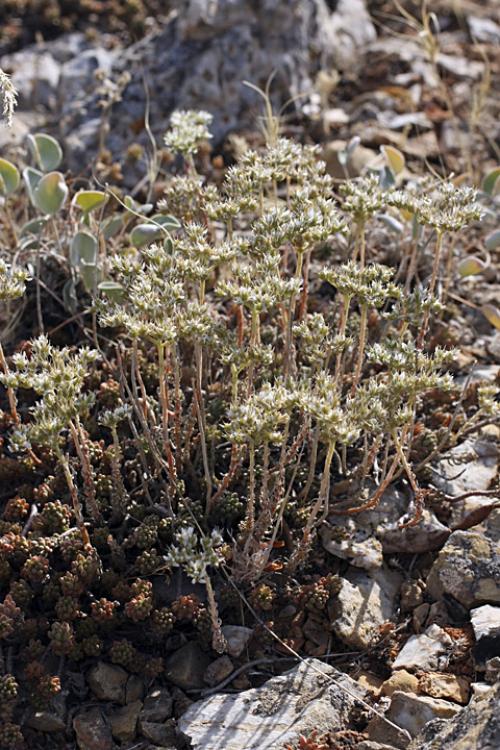
Photo © Eugene Davkaev (Montarano Nature Photography)